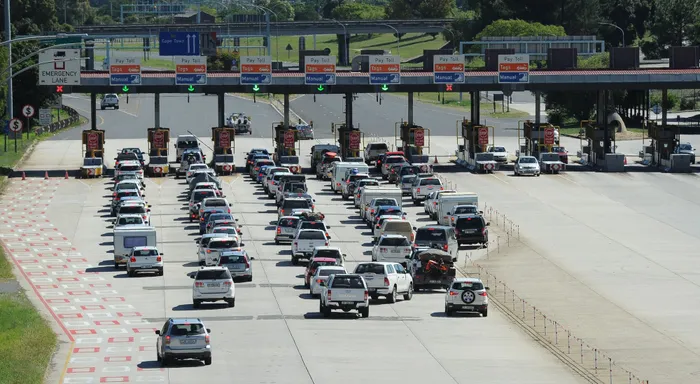A just transition in the transport sector must be another giant leap for humankind

In South Africa, transport ranks among the top three sources of greenhouse gas emissions, says the author.
Image: Henk Kruger /Independent Newspapers
Good as we are in declaring days, weeks, and months of celebration, observation and of focus, we as a country spotlight October on transport and mobility. While of bona fide intent, year after year these spotlights have become nothing but short-term public relations campaigns, primality championed by government, selectively by the private sector and the development and donor community, depending on the issues and its priority on the global stage.
Following energy, water and communications, transport remains a critical do-or-die enabler and a fundamental necessity for any major economic transformation in any society. From the invention of the wheel, the first steam rail engine and the Wright brothers’ first flight, to our first landing on the moon, innovation in mobility has altered the course of human development.
South Africa’s transport sector is dominated by road with extensive port and rail infrastructure in addition to a well-established aviation and maritime industry. Our transport systems are villains and victims of the effect of climate change as they contribute significantly to emissions, while rising climate risks threaten their performance and resilience. Understanding this duality is central to plotting a just, sustainable, and resilient just transition pathway for the transportation sector.
In South Africa, transport ranks among the top three sources of greenhouse gas emissions (GHGs). By 2022, the transport sector contributed 12% to the country’s total CO₂ emissions from fuel combustion. This showed an increase of 35.7% between 2000 and 2022. Looking ahead, if no major policy changes occur, transport emissions are anticipated to rise up to 78 Mt CO₂e by 2030 and 126 Mt CO₂e by 2050, approximately 90% coming from road transport, 9% from aviation and the net balance from rail transport.
Climate induced events are pounding our ailing transport infrastructure.Transport not only contributes to emissions; it is also increasingly vulnerable to climate impacts. Floods wash away roads, rail lines, and bridges. Heatwaves damage pavements, soften asphalt and warp railway tracks. Storm surges and sea-level rise threaten ports and coastal highways. These disruptions carry immense economic and social costs from delayed goods and stranded commuters to increased maintenance and emergency response costs and post disaster reconstruction and rebuilding of communities.
In South Africa, where coastal infrastructure, rural roads and remote corridors are vital economic connectors, the risks of floods, sea-level rise and temperature extremes must be central to transport planning. Building climate-resilient infrastructure is critical in ensuring we are successful in transitioning to a low carbon future.
Green Mobility and Sustainable Transportation is central to our development ambitions. To align the transport sector with South Africa’s climate goals, we must move beyond fragmented, siloed interventions and adopt holist systems approach that integrates spatial planning, land use, energy systems, finance, and industrial policy.
In 2017, the country launched the Green Transport Strategy, which aims to reduce GHG emissions from the transport sector by 50–80% by 2050 relative to 1990 levels. It also includes mode shift targets and an interim target for vehicle efficiency by 2030. These targets were adopted before South Africa announced its ambition to achieve a net-zero economy by 2050. To further strengthen efforts, a CO₂ differentiated tax is applied to motor vehicles at registration based on their CO₂ emissions, and a general CO₂ tax was introduced in 2019 and some major cities including Pretoria, Johannesburg, Cape Town, Polokwane, George and Rustenburg have adopted Bus Rapid Transport (BRT) systems. Metrorail system operates in KwaZulu-Natal, Gauteng and Cape Town , with highly underinvested rail service.
Shift towards smarter, low-carbon modes of transport is key to a just transition Without reliable rail, road, port and energy networks, efforts to decarbonise mobility or promote new transport technologies will falter. Strengthening and expanding this foundation is, therefore, essential to enable other elements of the transition.
Urban and regional planning should aim to shorten travel distances and promote shared or non-motorised mobility. Significantly, this requires increased effort from government to transform our cities away from erstwhile apartheid spatial planning to integrated mixed-use settlements, efficient and affordable public and non-motorised transport (cycling and walking) as viable and feel-proud options for all of us.
We must also accelerate technology use, and South Africa must rapidly expand to new energy vehicles, which are powered wholly or partly by electricity, hydrogen, or other alternative clean energy sources be aligned with the broader electricity reforms and renewable energy expansion.
Neglecting the carbon and climate risks embedded in our mobility systems today will only result in more expensive, reactive responses tomorrow. It is time these annual sacraments to deliver on their intent – and for transport month to start demonstrating new leaps for humankind, as in our first landing on the moon.

Zimasa Vazi, Senior Manager for Stakeholder Engagements, Presidential Climate Commission.
Image: Supplied
Zimasa Vazi, Senior Manager for Stakeholder Engagements, Presidential Climate Commission
*** The views expressed here do not necessarily represent those of Independent Media or IOL.
BUSINESS REPORT